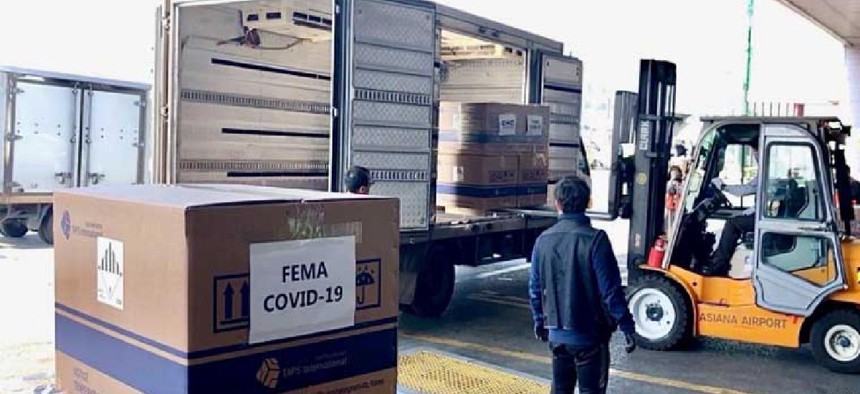FEMA’s plan for hurricane response during a pandemic


Connecting state and local government leaders
This year, the Federal Emergency Management Agency’s hurricane season guidance also addresses the complications introduced by the COVID-19 pandemic.
The Federal Emergency Management Agency has issued hurricane season response and recovery guidance for states also managing the COVID-19 pandemic.
According to the COVID-19 Pandemic Operational Guidance for the 2020 Hurricane Season, “many aspects of disaster response may be conducted remotely this year.” State, local, tribal and territorial (SLTT) officials should expect to leverage virtual communications for their own and FEMA’s processes, the guidance states, as these processes may require online, rather than in-person, efforts due to the pandemic. Localities should also expect to support victims through new virtual application processes, particularly those living in impacted communities that already have IT and communications gaps.
For IT operations, response and recovery means supporting remote inspections and preliminary damage assessments using drone imagery and Hazus, a GIS analysis tool for estimating potential damage from earthquakes, floods and hurricanes. Local agencies should also pre-identify accessible platforms for virtual meetings with interagency and private-sector partners.
Bolstering communications and IT for remote operations will allow staff to work outside states’ emergency operations centers should the pandemic make that necessary. It will also address the increased need for virtual town halls, coordinated communications with survivors, response and recovery partners and those requiring accessible and multi-lingual services. If communications networks are damaged by follow-on incidents, plans for stabilization will be even more essential to support remote work.
With increased numbers of remote responders, emergency operations centers will need extra IT staff who are trained to work remotely for extended periods on multiple disasters. Authorities should also consider temporarily expanding bandwidth for IT and financial services applications.
SLTTs will also need a system that can collect and share data and produce analytics to support decision-making and facilitate development of a common operating picture for multiple response operations. They should consider tools that help assess disaster impacts, vulnerable populations, systemic risk and other issues necessary for timely and data informed decision support.
911 dispatch and public safety answering points should be available to citizens in need, and call-center capacity may need to be increased. SLTTs might consider establishing a coordinated call center system to divert non-emergency calls from the 911 system.
“FEMA expects our SLTT partners and fellow emergency managers to problem-solve, act, and do what emergency managers do best---coordinate, communicate, and collaborate,” the report concludes. “As the Nation moves into hurricane season, emergency managers will need to lead, innovate, and be resourceful to address challenges and adapt disaster operations to meet the needs of survivors in the current environment.”





